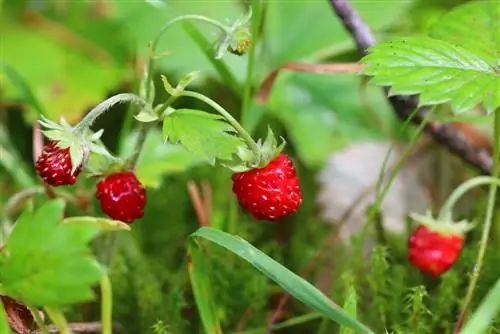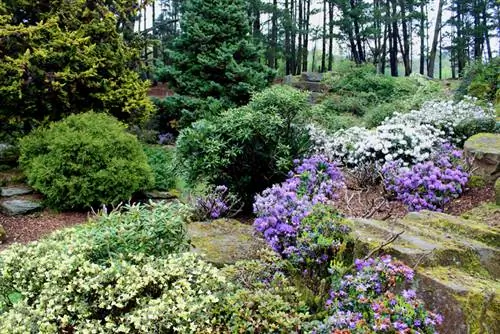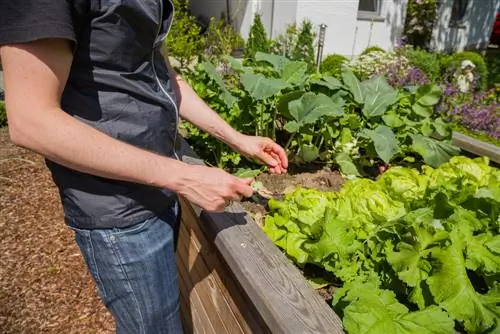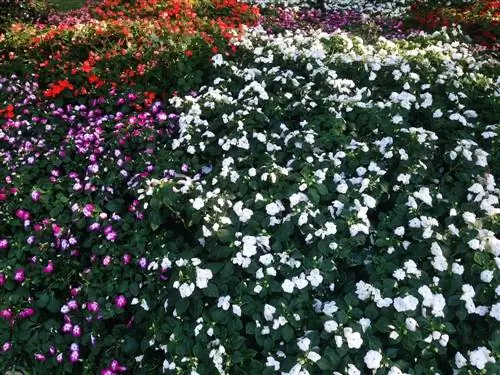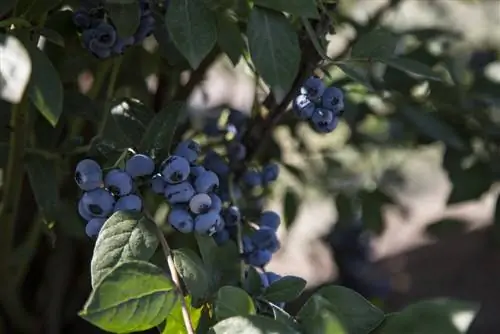- Author admin [email protected].
- Public 2023-12-16 16:46.
- Last modified 2025-01-23 11:21.
Some types of fruit, such as grape vines, require a full sun location to produce really sweet and ripe fruit. Many types of berries, on the other hand, also cope well with a partially shaded location.
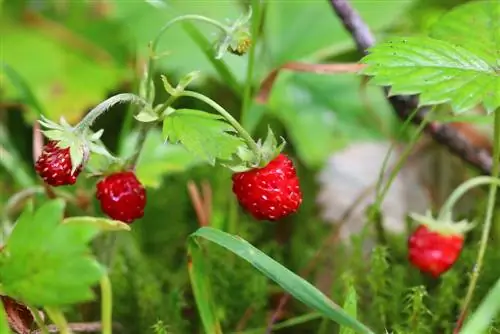
Which berries are suitable for partial shade?
There are some berries that grow in partial shade. These include wild berries as well as raspberries, blackberries, gooseberries and currants. The berry bushes do not like waterlogging. Maintain the recommended plant spacing and cut back the leaves of the berries regularly.
Planting berries in the right place in the garden
Planting berries in a suitable location in the garden makes care easier and improves yield. While strawberries produce good yields when grown in full sun, the following berry varieties also thrive wonderfully in partial shade:
- Wild strawberries
- Gooseberries
- currants
- Raspberries
- Blackberries
However, berry bushes and the canes of raspberries and blackberries should only be planted in partial shade in soil without an acute risk of waterlogging.
Maintain sufficient planting distance in partial shade
A partially shaded location can be a dangerous factor for many types of berries in terms of plant he alth. To prevent powdery mildew infestation in the relatively humid climate of a partially shaded location, sufficient planting distances should be maintained and the leaves should be ventilated and dried through regular cutting.
Tip
The lower level of sunlight ensures a relatively late ripening time for berry bushes in partial shade. With gooseberries, it is common practice to harvest some of the fruits before they are fully ripe and process them into jam so that the remaining fruits on the branches become particularly sweet and can ripen.

